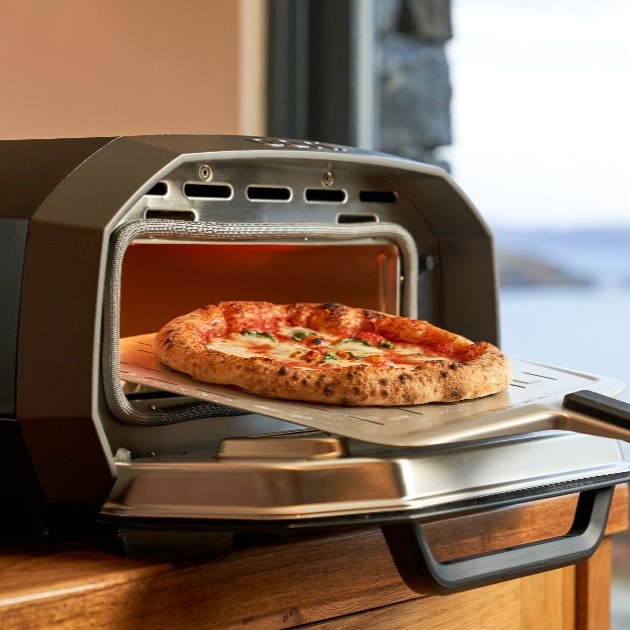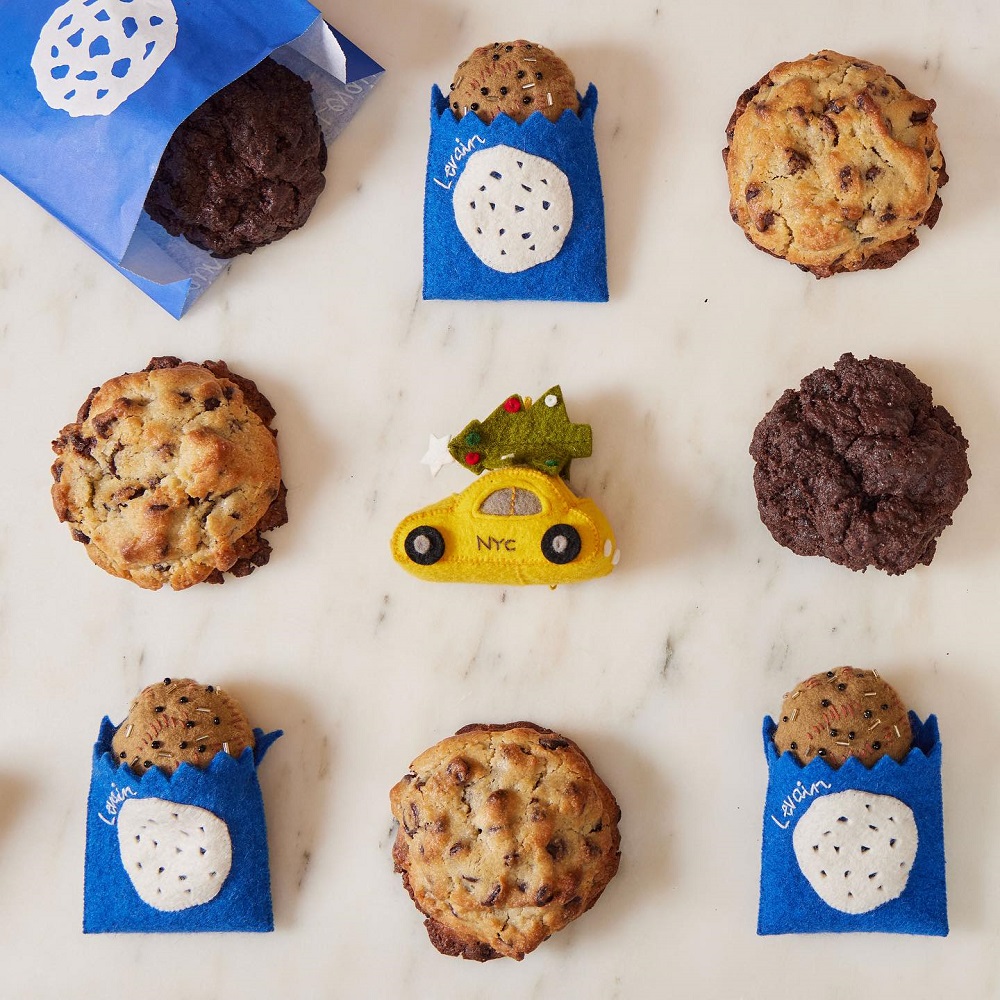Couch to Half Marathon – The Ultimate Guide
Table of Contents
Getting Started
There are many reasons why a person moves from the couch to half marathon training. Sometimes, a person is spurred onto marathon training in to emphasize their health. Others are motivated for self-care. Some struggle with anxiety, depression and other mental health conditions and are looking to reap the natural benefits of endorphins. Training for and running a half marathon can be a way of changing up your thoughts if you are stuck in a rut after a breakup, a loss or another challenging life event. You may simply yearn for more optimism and positivity.
I had never preconceived that I would run a half marathon (for the record—a half marathon is 13.1 miles or 21 kilometers.) I had finished a challenging first year of university and was transferring to a school closer to home. It was mid-July, and I was working a dull office job—my first real work. I was in-between tasks, scrolling email when I decided to write a list of things I wanted to do. Many things appeared on the list, which I did not attempt, things like rock climbing and travel. I did, however, try salsa dancing, spinning pottery on the wheel and yes, running a half marathon. Despite the seemingly unintentional approach, this is the way many people transition from the couch to half marathon ambitions. It could be a conversation that sparks their thoughts, a magazine article or even a bad day at the office.
Building an Accountability System
Whether you are training alone or have a committed running partner, an essential part of moving from the couch to half marathon mode is to have a system of accountability. The best way to develop a system is to evaluate your personality traits and tendencies, the flexibility of your schedule and your goals. When you understand the interplay of these factors and how they contribute to your ultimate running goals, it will make it easier to determine how you can fashion an accountability system that will serve you the most.
Social community is a crucial ingredient to wellbeing. In The Blue Zones, a book about the world’s longest livers – centenarians – social connectedness is cited as a tenet of living well and living long. The “intellectual stimulation and emotional support” we receive from our relationships bolster us through challenging times and help us to thrive and grow. It is crucial to think about your social community when you endeavor to transition from the couch to half marathon training. Tell people that you are training so that they can ask questions, show interest and motivate you to stay on track. If you are running alone, find a running community where you can check in about your progress and problem solve when challenges come up related to technique, training schedule, or the technology of your running shoes.
If you can match schedules with another person, it can be the best way to stay committed and on track. You can choose a friend, colleague or family member, but make sure that your running paces align. You don’t want to feel the push and pull of an uneven dynamic. I found my perfect match in a running club, and we ran stride in stride from training runs to race day.
Benefits of a Running Buddy
- Social outlet
- Keeps you on track and consistent
- Safety (at night or in the early morning)
- Motivation to meet your running goals
- Companionship and diversion during the challenging parts of runs
Motivating Yourself When Running Alone
If your schedule is packed or you are an introvert and enjoy the thinking time alone, there are some essential things to consider to keep yourself motivated and accountable to your runs.
- Put the workout into your calendar as if it’s an appointment
- Set a reminder or alarm to stimulate you to begin your workout
- Lay your clothes out and put your running shoes by the door
- Make a playlist to set the tone for your run
- Create an association that assists you in initiating your run. For instance, you might put your running clothes on as soon as your alarm goes off in the morning or change into them the moment you get home from work
- Plan activities after your run, motivating you to complete it
- Remove your reward
- Run with the dog
- Reward yourself afterward
Setting Goals
Your first goal is to shift from the couch to half marathon training but where do you go from there?
- Write it down on paper (even penning the exact date of your race is an excellent first step!)
- Scale your goal. Don’t think about the significant distance, break it into achievable pieces
- Think about how you will tackle each step and create an action plan. Separate your must-do’s from your should do’s
- Keep track of your progress using an agenda, a word document or even an app
- Get accountable.
- Reflect on your goals and celebrate the strides you make. Learn from your mistakes to guide your path forward.
Training Plan
If you’re setting out on a journey to complete your first half marathon but still wondering if you can do it, the answer is YES! Going from couch to half marathon mode is entirely doable, but finding the right couch to half marathon training plan makes all the difference. The distance is achievable, and you can run confidently and comfortably if you take it one focused and conscientious step at a time.
You don’t want to push your running before you’re ready, but building your fitness systematically will give you the right foundation to run injury-free and hit your PB.
You might want to consider a rowing machine to help build endurance and strength. NordicTrac rowing machines offer a variety of different features which should help building up to your half marathon capabilities.
Providing yourself enough time to train on your couch to half-marathon plan will guarantee your success. Carve out your schedule so that you don’t train endlessly but rather still feel the pressure to reach toward race day.
| Half-Marathon Training Schedule | |
| Monday | Rest Day |
| Tuesday | Moderate Pace (faster than long run) |
| Wednesday | Rest Day or Cross-Training Day (easy to moderate effort, 45 mins) |
| Thursday | Moderate Pace (faster than long run) |
| Friday | Cross-Training (easy to moderate effort, 45 mins) |
| Saturday | Long, slow run |
| Sunday | Short, easy run |
| Week | Mon | Tues | Wed | Thurs | Fri | Sat | Sun | Total |
| 1 | Rest | 3 miles | Strength and Core | 3 miles | Cross-Training | 4 miles | 2 miles | 12 miles |
| 2 | Rest | 3 miles | Strength and Core | 3 miles | Cross-Training | 4 miles | 2 miles | 12 miles |
| 3 | Rest | 3.5 miles | Strength and Core | 3.5 miles | Cross-Training | 5 miles | 2 miles | 14 miles |
| 4 | Rest | 3.5 miles | Strength and Core | 3.5 miles | Cross-Training | 5 miles | 2 miles | 14 miles |
| 5 | Rest | 4 miles | Strength and Core | 4 miles | Cross-Training | 6 miles | 2 miles | 16 miles |
| 6 | Rest | 4 miles | Strength and Core | 4 miles | Cross-Training | 3.1 miles | 2 miles | 13.1 miles |
| 7 | Rest | 4.5 miles | Strength and Core | 4.5 miles | Cross-Training | 7 miles | 3 miles | 19 miles |
| 8 | Rest | 4.5 miles | Strength and Core | 5 miles | Cross-Training | 8 miles | 3 miles | 20.5 miles |
| 9 | Rest | 5 miles | Strength and Core | 5 miles | Cross-Training | 6.2 miles | 3 miles | 19.2 miles |
| 10 | Rest | 5 miles | Strength and Core | 5 miles | Cross-Training | 9 miles | 3 miles | 22 miles |
| 11 | Rest | 5 miles | Strength and Core | 5 miles | Cross-Training | 10 miles | 3 miles | 18 miles |
| 12 | Rest | 4 miles | Strength and Core | 2 miles | Cross-Training | Rest | Race Day! | 19.1 miles |
Find out what motivates you
Determining what motivates you is the first step to any habit formation, and identifying the routine can help you make sense of your patterns. If you want to stick with a routine, like running, it is useful to understand what makes you show up and what helps you persist. Running might be a chance to have conversation with a friend, to actively analyze your problems for a succinct period of time or to give yourself a guilt-free treat. It might also be an opportunity to improve your sense of self worth, or to hammer away at a personal best, but whatever the reason, determine what it is that makes you show up to lace up. When you learn more about yourself, what makes you tick and importantly why it will be easier to set a routine that you can follow through.
Rewards
Sometimes it’s just hard to get out the door for your workout. It may be raining, you may have woken up feeling sluggish, your mood may be low, or the back of your hamstrings may be aching from the last miles of your Saturday long run. Whatever is holding you back, it can help to have rewards for getting your run in. Researchers refer to these treats as “indulgent incentives.”
1. Reward yourself within the workout
One of the biggest misnomers about working out is that the indulgence should happen once you’ve made it through the tough workout. Why wait! Health expert and author of The Happiness Diet, Rachel Kelly, says, “the reward is in the workout itself.” You should indeed do what you love when you are exercising, but running can be challenging even on your best day. An excellent way to incorporate a treat is to download a carefully planned upbeat playlist, an audiobook you’ve been craving to get into or a favorite podcast that you’ve stored up until your hill training. This will feel like a form of self-care while you get your workout in. Plus, you’ll find that you are learning and expanding your mind as you alter your lifestyle from the couch to half marathon training.
2. Put money into it
Your parents did it for you to keep you on the straight and narrow, and now, you might do it for your children too, but did you ever consider affording yourself the same incentive. Taking an empty pickle jar and tossing a coin in for every run is one way to motivate yourself out the door. Sure, you won’t get your treat right away, but you’ll have lots of time to dream it up. Maybe you’ll pick a fabulous new restaurant for dinner out, a new pair of running leggings that have been on your mind, or a massage to relax those tight, hard-working muscles. When you cash in your treat, it will remind you that you can reach your goal again; put the jar back on the shelf and begin again. If you aren’t a fan of the jar method, you can put money into a running program, and the intentional strategy will make you invest in yourself.
3. Throw away your to-do list
It can be hard for a runner to unwind and decompress, but it’s made easier at the end of a workout. Sometimes the greatest gift you can give yourself is to have no agenda. Discard your aims, lists, and aspirations and just let yourself relax. A cup of tea, some aromatherapy, and sock slippers might put you in the mood.
4. Take a Nap
For children, taking a nap is a punishment, and for adults, it is the highest form of reward. Curling under the covers after a workout doesn’t just feel good, but it allows your muscles to recover. After the exertion of a run, your adrenaline will be flowing, and your heart rate will be elevated, so the best time frame for a nap is two hours after your workout.
5. Have a Special Drink
If you are a coffee drinker, you will run anywhere for your favourite dark roast or latte. If coffee isn’t so much your thing, there’s many reward in picking out a specialty tea or even a smoothie. Running for a treat can help you through a grueling fartlek session.
6. Document your accomplishments
Documenting your accomplishments is a way to check in about how far you have come and to be mindful of your milestones. Similar to gratitude journaling, documenting your accomplishments is a reminder of your progress, your intentions and the things you can be grateful for in each workout and each part of the journey. You will notice your mental wellbeing strengthen, and you will enhance the clarity of your focus with this technique.
7. Indulge in a treat
Food is not the enemy of the runner. It’s incredibly crucial to the way you feel and perform, and it’s ok to indulge—in moderation. You may be very hungry after your run, and so it’s best to fill yourself with healthy foods to begin. Then, choose your favorite sweet or savory treat and enjoy every bite, feeling proud of the effort you put into your workout.
8. Book a social engagement
Even when you run with friends, running can be an isolated activity. Runners can get in the habit of talking about, well, running. It is essential to break out and talk about a broader range of topics, allowing your brain to release from your training program. While shifting your lens from the couch to half marathon training, don’t lose sight of the more significant scope.
9. Give yourself 30 minutes of your favorite activity
It sounds like a simple treat, but we aren’t as proficient at self-care as we like to think. With the pace of technology, it is easy to spend much of our days responding to the demands of others, and somewhere along the way, we forget to take care of our primary needs. Doing so allows us to be present with the people we love and with our endeavors.
After your run, set aside a 30-minute block to watch your favorite television show, listen to an audiobook while taking a bubble bath or simply lie on the floor with the dog. You will be amazed at the way your energy changes, your system recharges, and your perspective lightens.
10. Meditate While Running
With hectic schedules and competing demands, it can be challenging to fit meditation into the day. Why not try moving meditation! What exactly is moving meditation? According to the Tibetan Buddhist tradition, moving meditation is similar to sitting meditation in its principles. The main difference is that in sitting meditation, you might focus your attention on the breath or a mantra, but in moving meditation, you focus on the feel of your foot striking the ground.
Perfect mindfulness for runners, right? You’ll be surprised at how hard it is to touch and release the thoughts passing through your mind and think only of the sensation in your foot. With committed practice, your monkey-mind will relent! Challenge yourself to five minutes at first and think “step, step, step.”
Nutrition
Nutrition is a critical part of half marathon training. It takes a lot of experimenting to determine what foods feel good in your body. If we’re not training, we can be absent-minded about our intake, simply because the effects don’t have the same implications.
When you run out of fuel partway through a run, you think twice about your Friday night meal choice. The same thing goes when food moves through you too quickly in the first miles of a race! The importance of practicing proper nutrition during training is that it gives you the foundation for understanding how your body responds to different foods, meal preparations and combinations, giving you the best opportunity to perform well on race day.
The Carb Load
It’s common knowledge that runners fuel up with carbs for a marathon, but do you need to do the same for a half marathon? Let’s put it this way—it won’t hurt. When you carb load for a half marathon, you don’t need to go as full out, but the general rule is that if you’re in motion for more than 90 minutes, carb-loading benefits you. There are some negative aspects of carb loading to consider:
- It can make you stiff (because your muscles are “stocked with glycogen”)
- It can lead to weight gain from water retention
- For shorter runs, (less than 90 minutes) carb loading is not necessary
For most runners, the half marathon is longer than 90 minutes, and so you should plan to carb-load in the days before the race. You can do so effectively in one day, but two to three days of carb loading will assure you that your body is well prepared for your race.
Again, you aren’t taking in more calories; you just are choosing carbohydrate rich foods to concentrate your calories, particularly for your lunch and dinner before race day. Eating your carbohydrates in advance allows your body the opportunity to “digest, absorb, and store the nutrients.” With a carb load, you’re setting yourself up for success on race day.
Best Carbohydrates For Runners
- Bananas
- White toast
- Pasta
- Dried fruit
- Chocolate milk
- Brown rice or quinoa
- Yogurt
- Sweet potato and beetroot
The Pre-Race Meal
You don’t want too much or too little in your system for race day. Some tips for getting the right balance include:
- Carb-rich
- Low-fiber
- Easy-to-digest
- Familiar foods
Nutrition During the Race
Eating during the race can prevent the dreaded runners from crashing. It can be hard to get into the habit of eating while running, and so it is something you will want to practice. Your approach is individual and depends on how your body responds to the foods that you trial during your training runs. Remember, the golden rule of racing is never to try anything new on race day. There are many gels, powders and solids available to help you to your personal best while running. When you run for less than 75 minutes, your body can rely on:
- Water
- Sports drinks
- The body’s glycogen stores
If you go longer, as in a half marathon, you will deplete your glycogen stores, so staying ahead of the curve can help you to replenish before you feel the effects of nausea, dizziness, and cramping. When your muscles and your body begins to run empty, your mood and motivation will also dwindle. Consuming carbohydrates throughout your run has a stabilizing effect on your blood sugar. Drinking small, regular amounts of water is essential, while drinking too much water can make you feel sick. You don’t want your muscles to begin to suffer because it is challenging to make up for the loss. Instead, take in nutrition at regular intervals to keep yourself from hitting the wall. Try to incorporate:
30 to 60 grams of carb per hour
- Chews
- Gels
- Sports Drinks
After the run, you’ll want to load up with a 3-to-1 ratio of carbs to protein. Try to incorporate a lean protein and healthy fats.
Fashion statements
You can’t deny it; it feels good to put on that zippy new running top, to lace up that pair of shoes with the neon coloring, or to don your latest pair of running shorts or leggings. Not only is fashion a fun part of running, but it is also an important consideration when training. Choose the wrong pair of shorts on a humid summer day, and you will have a chafe that keeps you up at night. Wear a pair of shoes for too many miles, and your arches will pay the price. The right technical gear sets you up for promising training runs and a race that will make you proud.
If you aren’t an athlete, you may care about socks, have had the odd blister from a long walk in an inadequate pair of socks or have preferences for breathability. If you’re a runner, however, socks are the holy grail. You live for the sock that can wick away sweat and keep your foot dry, cushion your foot and prevent blisters for mile after mile (even in the rain!)
For best race results consider:
- Quarter Socks
- Calf compression socks
- Quarter socks
- Running Compression Socks
- Thin Running Socks
- Crew Socks
- Athletic Fitness Socks
- Anti-Blister Running Socks
Couch to Half Marathon Injury prevention
The most important part about training for a race is getting to race day and beyond in healthy condition. There are many strategies for taking care of your working muscles and preventing injury, including regular stretching, rolling out, the use of tune-up balls and cross-training.
Cross-Training
Cross-Training is not a whim, a reaction of boredom or a diversion. It is an essential element of any running program. In order to perform at their best and to prevent the occurrence of injuries, runners need a strength-training program that focuses on balance. Through cross-training, runners employ exercises that develop the primary muscles involved in running, as well as balancing the body by developing muscles that are not targeted through running activity. Cross-training has a holistic effect on the health of the runner, improving cardio, strengthening muscles and speeding recovery.
Rolling Out
Foam rolling can be a relaxing and mindful activity. Depending on how tight you are, it can also really hurt! Creating a regular practice for foam rolling will enhance your flexibility and recovery. You can roll out while listening to music, playing with your dog or toddler on the carpet, or watching television. Foam rollers are available in a variety of sizes, and they are a terrific addition to any runner’s warmup and cooldown regime. One potent effect of foam rolling is that it improves circulation, which prepares you for your workout and enhances an active recovery. Not only that, but foam rolling prepares your muscles for stretching. When you find a sore spot, go slow until you feel a release. You can also roll out your fascia using tune-up balls. This technique is especially helpful for sore feet!
Runners Roll Out-Warmup
- Calves
- Iliotibial band
- Piriformis
Runners Roll Out-Cooldown
- Hamstrings
- Adductors
- Quadriceps
Stretching Do’s and Don’ts
- Don’t stretch cold muscles. It’s more useful to stretch after a run than before.
- Take a light stretch before you engage in speed work
- Be gentle with your stretching. Don’t push your body where it’s not inclined to go
- Before speed work, hold for 10-15 seconds for each stretch
- After running, hold each stretch for 30 seconds
Post-Run Stretches
- Lying hamstring stretch
- Lying gluteal stretch (using a wall)
- Groin stretch
- Upper calf stretch (Gastrocnemius)
- Lower calf stretch (Soleus)
- Iliotibial band stretch
- Hip flexor stretch
- Standing quadriceps stretch
Enjoy the ride
The most important part of your couch to half marathon journey is to enjoy your self-growth and your mental and physical experience. There is no doubt, lacing up your shoes will become a part of your identity, a primary lens through which you view the passing world and your internal landscape. It is important to plan, to prepare, to reflect but it is just as essential to take stock of the moment, to truly feel it and to love the body you are in and the path you are on.
I had a coach during that summer when I first decided to move off the couch to half marathon training. Once a week, he would plan a run past the local hospital. As we were passing, he would ask us to take a silent moment, feeling the strength and capabilities of our bodies and, most of all, feeling gratitude. Over the years, I have added a second component to be thankful for my mind and the balance and wellbeing running offers. The simple routine you establish, leaving behind old patterns and creating new habits of health and self-care, will serve you long beyond race day, so enjoy the ride!








